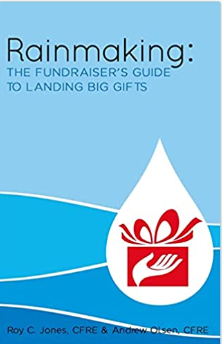According to authors Paul Schervish and John Havens, Americans over the next 40 years will donate to their favorite charities at least $6 trillion through bequests and other estate planning vehicles. In spite of the recent economic downturn, there is an overwhelming amount of evidence that the United States is entering “a golden age of philanthropy.”
Estate planning is essentially encouraging your staff, donors and supporters to plan how much of their assets will be distributed to your ministry after their death. In other words, it’s about creating planned gifts that will happen in the future. There is little doubt that the single largest donation your organization will ever receive from a donor will likely be their last gift; a gift that was originally part of their estate plan “during-life” to generate a gift to your ministry to be made “after-life”. So where should you begin?
First, please know that your organization is not alone in launching an estate planning program. So where do you begin? Who are the best prospects for estate planning and planned gifts? The answer: begin with your regular donor file.
Giving frequency is key. Contrary to conventional wisdom, the best planned giving prospects are NOT your major gift donors who have made 5-figure or 6-figure donations to your ministry. The best prospects for making a planned gift to your ministry are individuals who have made multiple donations to your group, regardless of how small the gifts are. Begin your estate planning program by looking at your donor file and identifying individuals who have cumulatively given to your organization the most number of gifts. Frequency, not amount, is the key to demonstrating which donors have the best long-term relationship with your organization. Believe it or not there are people on your donor file who have written hundreds of checks to your ministry. The place to begin is with those that have made the most number of individual gifts, ranking your donor file from the most number of checks to the least.
Of course, not every donor on your file is alike; and different types of people are likely to gravitate to different planned giving vehicles. The good news is that there are some income and lifestyle factors that can be overlaid against the number of gifts to help you to distinguish your best prospects.
Age is important in estate planning. As individuals move out of their peak earning years in their 60’s and early 70’s, they begin to realign their estate assets to help them during retirement. There are numerous estate planning vehicles which charities and not-for-profits use to help their donors and supporters. In most cases the charity offers tax incentives and retirement income to the donor for a planned gift while they are alive, in order to be the beneficiary of the gift principle after they die.
It is between the age of 60 to late 70’s most donors execute or update their will to outlining how they want their assets distributed upon their death. The “will” may name your charity or organization (and their other favorite charities) to receive specific cash or real property donations.
Of course, many retirees in their 70’s, 80’s and 90’s live on fixed incomes and continue to make cash gifts to charity. Although the size of their annual donations may plateau or go down, these donors are likely to make a charitable bequest too as they want to make a final gift to your ministry. As retirees move into their mid-80’s and approach 90 years of age they usually begin to liquidate their estates, moving assets to family trusts or their heirs and designating specific gift amounts to their favorite charities.
There is another demographic group your organization should pay close attention to: single, females over age 65. Many women have outlived spouses, are excellent prospects for charitable gift annuities, charitable remainder trusts and, of course, bequest designations in their will. They tend to be living on fixed incomes and are worried about their future income stream. Annuities appeal to them because they guarantee an income stream for the rest of their lives in exchange for allowing the charity to keep the principle when they die.
Armed with these donor profiles, there are steps you can take to identify and target the planned giving prospects in your database. Overlaying the ages of your donors with their frequency of giving will help you to rank your top prospects for scheduling meetings to discuss their estate plans and potential for planned gifts to your ministry.
Now What? What can your ministry do to record put planned gifts on the books? First of all, market the benefits of planned giving to potential and current supporters in your newsletter, at volunteer events and in earned media interviews. Even on a small budget your organization can reap HUGE rewards.
Offer your staff and volunteers who will be helping with your planned giving effort an array of printed materials that will help educate potential donors and provide a quick overview of your organization and mission. The easiest way to do this is through a planned giving brochure or rack card depending on how much information you would like to include.
One of the best places to start your effort is to provide local attorneys and estate planners with brochures or rack cards and a brochure rack that they can use in their offices. Many times these individuals are face to face with potential donors looking for an organization to support. Local foundations can also manage donor funds and have a say in where private donations are made.
If your organization is in a large community you may consider hosting a seminar or evening reception for local professionals or potential donors. These informational seminars can focus on educating donors of long-term giving strategies and letting local professionals know about your mission and how they could help by educating their clients. Be sure to offer donors or local professionals documentation in a clear, concise package that presents a professional image for your organization.
Material topic ideas:
Taking Control Of Your World Through Estate Planning
Wills and TrustsCharitable Gift
Annuities
How To Leave a LegacyGift
Planning For The Future
The most common materials you will need to get started include:
Brochures
Rack Cards
Brochure Racks
Materials do not have to be expensive, multiple page booklets, sometimes a simple piece can explain everything a potential donor needs to help the future of your organization.
Many popular strategies exist for establishing a estate planning program within your development plan. The first goal is to understand your current donors and build a donor base. Your donors will no doubt want to see your organization thrive in the future and that is what a planned giving program will allow you organization to do. Planned giving should begin when you feel that your donors are ready to use their money to give your organization a secure future.
Although many organizations are afraid to enter the arena of planned / deferred giving, simple programs can be started to educate donors. This leads the way for more complex programs as your program matures. At the very least donors should be aware of various giving strategies and the tax advantages.
Everyone Can Make a will. Encourage every staff person, donor and volunteer to have a will. It does not matter how old or how young someone is. Everyone can make a will. Create a “society” or giving club that makes note of the fact that a particular person has named your ministry in their will or estate plan. The “society” list is not the motivator for joining. However, it is the vehicle that encourages people to let you know that they have you in their will.
* The tax information in this article is for informational purposes only. It is not intended, and should not be construed, as a recommendation, or legal, tax, or investment advice or used for the purpose of avoiding U.S. tax-related penalties. You should consult your tax advisor to answer questions about your specific situation or needs.


